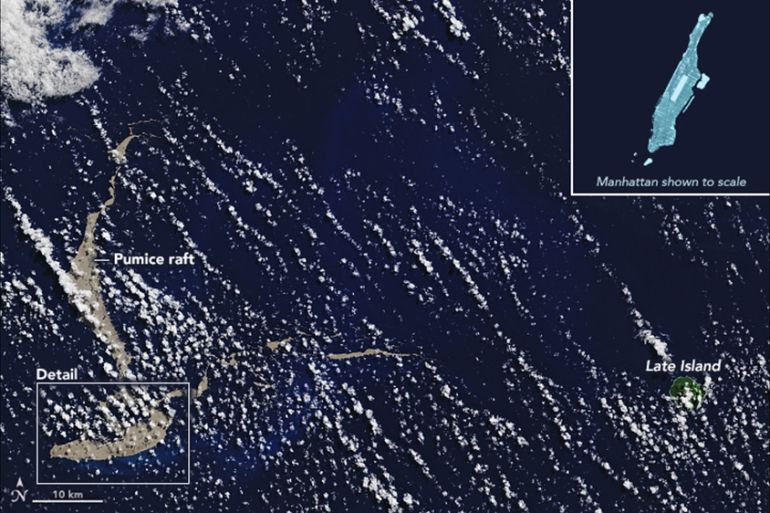Giant Pacific rock ‘raft’ to bring new life to Great Barrier Reef
Vast mass of volcanic rock carrying corals and marine life will reach Australian shores in eight months, say scientists.

A vast mass of volcanic rock drifting through the Pacific Ocean towards Australia could help replenish the Great Barrier Reef, according to scientists, amid widespread fears for the future of the climate change-ravaged ecosystem.
The Queensland University of Technology (QUT) in Australia said the floating sheet of pumice rocks, called a raft, is expected to hit Australian shores in about eight months, “bringing with it billions of marine animals who attach themselves along the way”.
Keep reading
list of 4 itemsTurtles swimming to extinction in Malaysia as male hatchlings feel heat
Could shipping containers be the answer to Ghana’s housing crisis?
Thousands protest against over-tourism in Spain’s Canary Islands
The raft stretches about 150 square kilometres, the university said last week.
It was likely produced by an underwater volcano near Tonga which erupted sometime around August 7, according to NASA.
Pumice is lightweight and is produced when magma is cooled rapidly.
Australian couple Michael Hoult and Larissa Brill first reported sighting the raft eight days later, on August 15, after coming across the rubble at night while sailing a catamaran to Fiji.
“We entered a total rock rubble slick made up of pumice stones from marble to basketball size,” they said in a Facebook post.
“The waves were knocked back to almost calm and the boat was slowed to 1 knot,” they added.
“The rubble slick went as far as we could see in the moonlight and with our spotlight.”
The couple were temporarily stuck after rocks jammed their boat’s rudder, but were later able to navigate a way out of the block.
Following their encounter, the couple sent samples of the pumice stone to researchers at the QUT.
In a statement, Scott Bryan, one of the geologists studying the samples provided, said the raft was going to “bring new healthy corals and other reef dwellers to the Great Barrier Reef”.
He later told the Australian Broadcasting Corporation (ABC) that the rock mass was probably composed of “billions to trillions of pieces of pumice”, each of which “is a vehicle for some marine organism”.
“When it gets here, [the pumice raft will be] covered in a whole range of organisms of algae and barnacles and corals and crabs and snails and worms,” he told ABC.
The Great Barrier Reef, covering 348,000sq km, was world heritage listed in 1981 as the most extensive and spectacular coral reef ecosystem on the planet, according to UNESCO.
It has suffered extensive damage in recent years, however, with rising water temperatures killing off large swaths of coral.